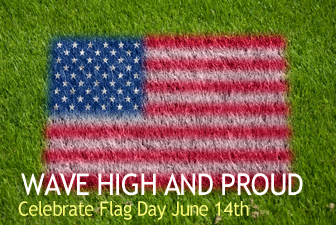10 Activities You Can Do With A Flag


Because we work with students from all areas of the world, talking about flags gives your students a chance to share who they are and where they come from. It is a natural lead in to culture and history, and as you show your class flags from around the world, your students will come to know and appreciate one another more. As you are getting ready to wave those banners high June 14th, here are some communicative activities you can do with your ESL class that use your flag and theirs!

Do your students think a flag can communicate something about the people who wave it? Give your students a collection of various national flags that they may not be able to recognize, and in small discussion groups, challenge your students conclude something about the people of a nation from their flag. Give small discussion groups some time to talk about the flags before coming back together as a class. Then ask groups to share their thoughts. Did any groups come to the same conclusions about the people of any given nation? Tell your students which country each flag belongs to, and then give your students a chance to show how their native country’s flag says something about the people of their nation. Ask each person to draw a simple picture of his native country’s flag or print one off the internet. Give them an example by explaining your own flag, and then invite each person to the front of the room to discuss the meaning behind their nation’s flag. What do each of the colors and symbols represent? They may want to share some of their country’s history, values or character as it relates to the flag
As a follow up activity, challenge your students to create a personal flag which they can use to communicate a message about themselves. Like the flags of nations around the globe, each person may want to communicate something about her history, her values or her character through the flag. Invite each person to share with the class, and then write a paragraph describing what her flag means. Once everyone has completed her flag and paragraph, display them on a bulletin board in your classroom and allow students to look at what their classmates have to say about themselves!
How well do your students follow directions? Can they translate instructions from the page to perform a physical process? You can challenge your students’ reading comprehension as well as their ability to follow directions by challenging them to fold an American flag. Only one proper way of folding the flag exists. Direct your students to U.S. Flag for directions, and give each pair of students a small American flag with which to practice. (Now is a great time of year to get small flags for low prices if you live in the U.S!) Give your students enough practice folding the flag until they can do it correctly at least once. Then, direct your students to go through the directions and identify any descriptions of place which aid in understanding the directions (waist-high, parallel to the ground, lengthwise, outside, etc.). Would they be able to fold the flag correctly without these descriptions? Have pairs discuss how these phrases aid the reader in recreating the process. Now challenge your students to use these or other directional phrases as they give directions to perform a different physical activity.
You can also use folding the flag as a way to introduce the idea of respect. Your class may enjoy discussing what they think it means to respect a flag and the nation it represents and why some people feel that you should respect a country’s flag. Do your students have a proper way to treat a flag from their country? Is there a special folding technique that they should follow? Ask your students to share their own ideas about how a person should treat a flag from his country and how he should treat a flag from another country. Make sure your students support their opinions. You may want to finish your discussion by giving your students a chance to share traditional ways that people in their home countries show respect for their flags.
As Americans, many people value their independence, tenacity and go getter attitude, but not everyone around the world thinks of Americans this way. In fact, people around the world hold many other assumptions when it comes to the idea of being American. Many think Americans are fat, lazy or indulgent. Challenge your students to think about what it means to be a member of the culture from which they come and how people in other areas of the world may have a different perception of their fellow nationals just as they do of Americans. Whether they are Asian, Latino, African or European, challenge your students to define what it means to be a member of their cultural group. You may want to give them some time to journal freely as they think about the topic. After your students have had enough time, give them independent work time to create a two-sectioned collage. On one side of a large piece of paper, ask students to create a collage that communicates what it means to them to be of their cultural origin, both good and bad. On the other side of the paper, ask students to represent what people around the globe think it means to be a person from that culture, both good and bad. You may want to give students some time outside of class to work on their project as well. Then, invite each person to talk to the class about his collage. Have students pay particular attention to the difference between their own ideas of nationality and those held by people around the world. Invite students to speculate why there is a difference between the two sides of the collage, if they are so inclined. Finish with a discussion about what it means to be nationalistic or have pride in one’s culture or country.
When June 14th rolls around this year, give your students a moment to think about what their flag means to them and to the rest of the world!